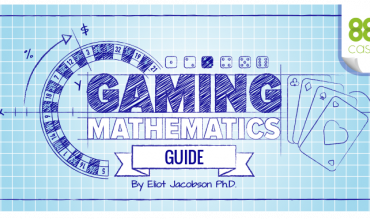
THE ULTIMATE GAMING MATHEMATICS GUIDE
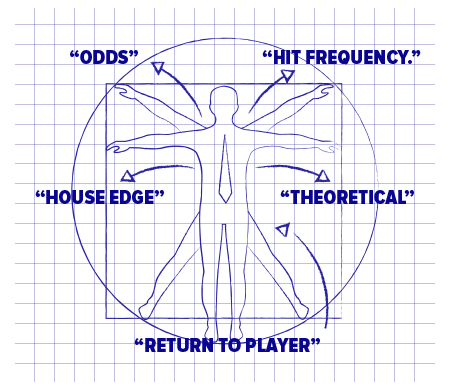
The opportunity to play a casino game is a product that the consumer purchases with his gaming dollar. The view I take is that the player wants to have a certain experience when he sits at a game and is willing to pay for that experience by means of the inevitable bite the house edge takes.
To fully understand the product the player is purchasing requires a journey into the mathematics of casino games. Marketing must understand this material when developing effective strategies. Every part of a player’s interaction with a casino game has its own mathematics. Wagers have “odds” that determine how much to pay the player if he wins. The percentage of time the player wins is called the “hit frequency.” The “house edge” is the fraction of the player’s total initial wagers that the house expects to keep over the long run if the player uses perfect strategy. The “theo” or “theoretical” is the actual dollar amount the casino expects to win from the player. The “return to player” measures the fraction of the player’s total wagers the player is paid back in live casino play.
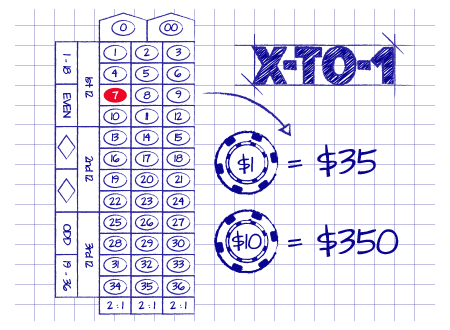
X-FOR-1, X-TO-1, 1-IN-X
Most table game wagers are paid in an "X-to-1" fashion. What this means is that if the player wins the round, his wager is returned and he is paid an additional amount for his win. If the player loses, then his wager is removed from the table.
For example, if the player bets on red-7 straight-up in Roulette then the payout is 35-to-1. If his wager is $10, then he either wins $350 (35 × $10) and his $10 is returned, or he loses $10.
This type of pay is different from slot machines. For slots, every time the player pushes the button or pulls the handle, an amount is deducted from his credit balance. That's his wager. Then the reels spin, and when they stop he is paid an amount based on the pattern displayed by the reels by reference to some pay table. No matter what the outcome of the reels, the player’s original wager is forfeited. We say that slots are "X-for-1."
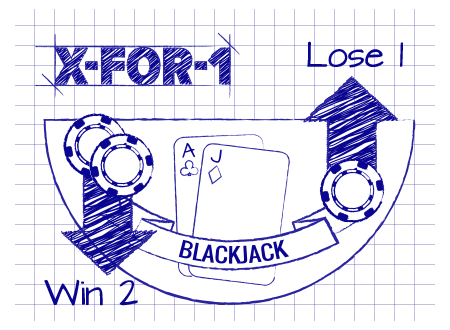
Most wagers on keno, lotteries, slots and video poker are paid "X-for-1.” This confusion has been used effectively, for example, in blackjack slot machines. Blackjack slots typically show a payout of 2 credits when the player is dealt a blackjack. The player knows that blackjack usually pays 3-to-2, so this seems like a sweet deal. However, this payout is 2-for-1. Thus the player forfeits his original 1 credit and then wins back 2 credits if he is dealt a blackjack. The player nets 1 credit in this way. Thus 2-for-1 is the same as 1-to-1. Few would play the table game of blackjack if the payout for a blackjack was reduced to 1-to-1, yet people often play these slots with a payout of 2-for-1.
The progressive wager in Caribbean Stud is an example of an "X-for-1" wager appearing in a well known live table game. The player's wager is automatically collected as it is made, and a light illuminates on the table indicating the player has made this wager. Another common "X-for-1" wager is the bad-beat jackpot in the poker room. The pot contributes $1 each hand to the progressive; that money is forfeit.
It is customary that wagers pay out "X-to-1” on a table game; examples of successful “X-for-1 wagers on table games are rare (one example are the hop bets in craps). Return the player's original wager if the player wins or pushes; otherwise collect the player's wager. Table games and slots are different animals and the most fundamental difference is that slots pay “X-for-1.”
Some wagers in table games are very similar to slots. For example the Pair Plus wager in Three Card Poker has a straight pay table based on the three cards dealt to the player. It usually pays “1-to-1” for a pair, “3-to-1” for a flush, “6-to-1” for a straight, “30-to-1” for trips and “40-to-1” for a straight flush. This side bet could just as well be a slot, as it requires no strategy, but it would then have the rather strange looking pay table: “2, 4, 7, 31, 41.”
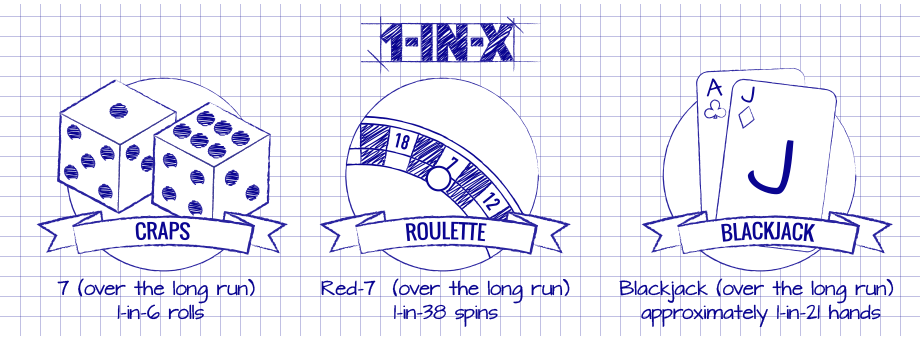
Finally, the terminology "1-in-X" is commonly used, but not in the context of payouts. For example, in craps, the shooter will get a 7 (over the long run) 1-in-6 rolls. In double-0 Roulette, the number red-7 will come up (over the long run) 1-in-38 spins. The player is dealt a blackjack (over the long run) approximately 1-in-21 hands. The terminology “1-in-X” has nothing to do with how much a game pays for a winning wager. It is used to describe the rate of occurrence of an event at a table game.
